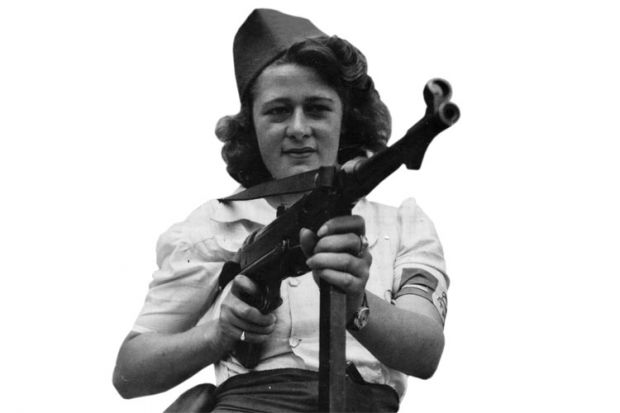The history of France during the Second World War left the French nation with a legacy that threatened its very identity and coherence, a legacy that had to be interpreted by moulding selected facts into an account that enabled pride to be retained. This narrative, Robert Gildea shows, proclaimed that the surrender to Germany in 1940 and the following armistice, which resulted in the Vichy regime and the occupation of three-fifths of France by German forces, were essentially illegitimate. The “real France”, represented by Charles de Gaulle and his Free French forces, had fought on from outside France, and a Resistance supported by all but a minority of French citizens continued the struggle in the homeland, until, in 1944-45, France, albeit with the aid of the Allies, liberated itself.
No effective myth, Gildea points out, is without its factual basis. There was what he calls a “continuous thread of resistance” from the moment that de Gaulle raised the Free French flag in his broadcast from London in June 1940 to his triumphant march down the Champs-Elysées in August 1944, while, at least from late 1942, there was an active underground Resistance in France.
Gildea, who made a major contribution to this field with his 2002 work Marianne in Chains: In Search of the German Occupation of France 1940-45, here considers the “central myth” of the French Resistance, “a story that served the purposes of France as it emerged from the war”. The internal Resistance that this valuable, detailed analysis reveals was far from a single united movement, for it varied in its numbers, aims and effectiveness, and from region to region. A strength of what will come to be seen as a definitive study is that it is based on immense research, in French provincial archives as well as national collections, and on oral history emanating from numerous interviews, both with resisters and the many French citizens who considered the Resistance a dangerous nuisance.
What emerges is no single united Resistance but rather a kaleidoscope of factions with disparate political sympathies and visions for a liberated France: Communist Party members, divided between those who took orders from Moscow and those who took an independent line; Trotskyists and other leftists; Gaullists, who saw their role as providing internal support for the Free French, and units organised by the British Special Operations Executive; there were also Jewish Resistance groups and exiled Spanish republicans. All had very different agendas, but the broad division was between those who looked forward to the restoration of pre-war France and those who aimed to turn liberation into revolution.
De Gaulle would eventually gain recognition from the UK and a reluctant US as the legitimate voice of France; he managed, with Machiavellian moves, to bring French forces in North Africa under his command; and he ensured that France was treated as a full ally when Germany surrendered. But as Gildea’s splendid study demonstrates, his greatest achievement was to embrace, disarm and sideline the Resistance forces that sought a revolutionary liberation, ensuring that it was his vision of the French republic and the Gaullist narrative of France’s role in the war that endured.
A. W. Purdue is visiting professor of history, Northumbria University.
Fighters in the Shadows: A New History of the French Resistance
By Robert Gildea
Faber & Faber, 608pp, £20.00
ISBN 9780571280346
Published 3 September 2015
POSTSCRIPT:
Print headline: Whose side are you on anyway?
Register to continue
Why register?
- Registration is free and only takes a moment
- Once registered, you can read 3 articles a month
- Sign up for our newsletter
Subscribe
Or subscribe for unlimited access to:
- Unlimited access to news, views, insights & reviews
- Digital editions
- Digital access to THE’s university and college rankings analysis
Already registered or a current subscriber? Login




